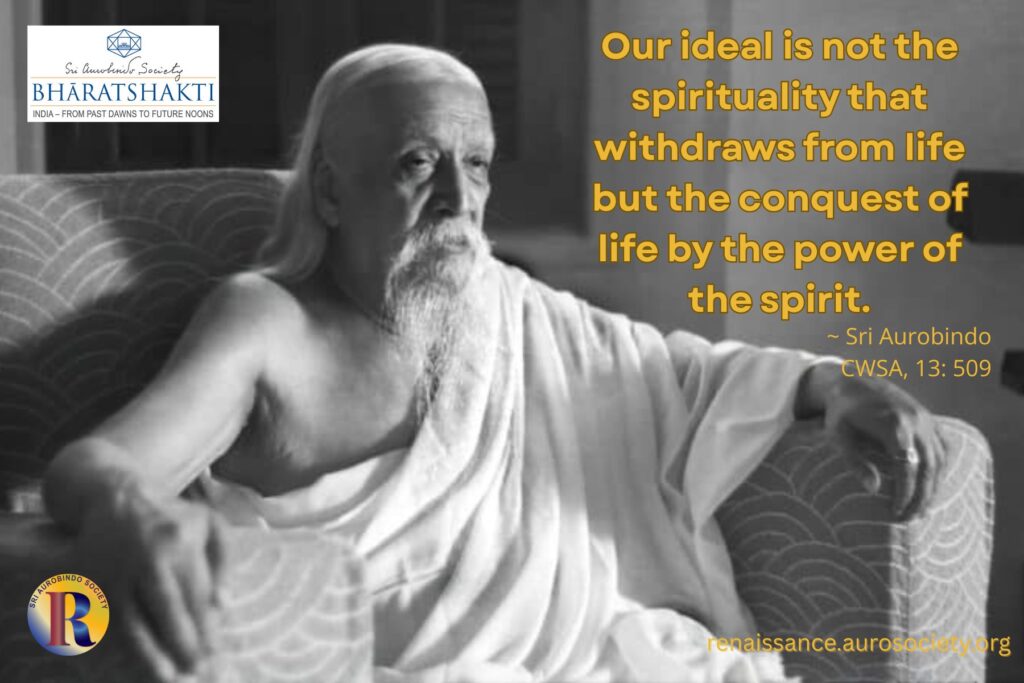Volume V, Issue 1
Author: Narendra Murty
Editor’s note: The elaborate practices of temple worship and mūrti puja are important means to bring the masses into the real temple of the spirit, says Sri Aurobindo. He explains further that the outward physical sense is satisfied through its aesthetic turn by a picturesque temple worship, by numerous ceremonies, by the use of physical images. But these outer practices are given a psycho-emotional sense and direction which is open to the heart and imagination of the ordinary man.
Most people growing up in Sanatana Dharma traditions are aware that the mūrtis or vigrahas (the English word “idol” which is often used for ‘mūrti’ is not the most appropriate one) that we see in the Hindu, Buddhist or Jain temples are not mere statues. They have, in fact, been energized to vibrate in a certain way so as to impact everything around them.
The ancient Agama Shastras of the Tantric tradition have described the entire concept and the science behind the murtis, their making, handling and also the worship practices. The mūrti of the deity as well as the entire sanctum sanctorum (garbhagriha) are consecrated as per the shastras. This practice of energizing the murtis is known as “prāna prathishtā”, which literally means Establishment of the Life-force.
* * *
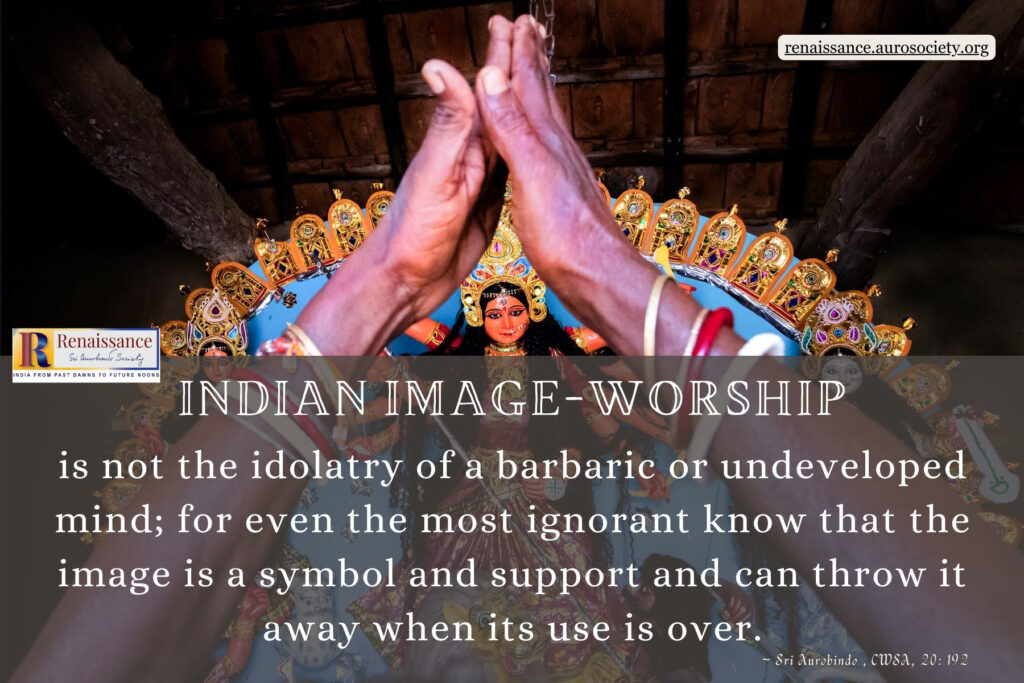
* * *
In this article, Narendra Murty speaks of the deeper symbolism behind the mūrti pūjā, and thus reminds of the truth of the Finite Form, which is a mūrti or a picture created to express some specific aspect of the Formless Infinite. We also feature another article by the same author in which he describes the symbolism hidden in the specific form of Ma Saraswati.

Let us recall an incident from Swami Vivekananda’s life.
During his parivrajaka days when Swamiji was travelling all over India on foot, he once visited the princely state of Alwar in Rajasthan. Raja Mangal Singh, the king of Alwar told him that he did not believe in mūrti pūjā or image-worship because he could not worship wood, stone or metal. Swamiji tried to make him understand but he remained unconvinced.
Suddenly, Swamiji asked one of the attendants to take down a picture of the Maharaja from the wall. Holding the picture in his hand, Swamiji asked the Dewan of Alwar to spit on it. At this the Dewan grew terrified and said, “What Swamiji, how can I do such a thing? This is the likeness of our Maharaja!” On hearing this, Swamiji said to the king,
See, Your Highness, though this picture is only a piece of paper, your devoted servants treat it with respect because it reminds them of your Highness. Similarly, devotees worship God in an image because it brings to their mind some special form of God and helps them to concentrate; they do not worship the stone or metal as such.”
At this the Maharaja said with folded hands, “Swamiji, till now I did not understand the meaning of image worship. You have opened my eyes.
~ adapted from the book The Life of Swamiji: His Eastern and Western Disciples
A vigraha or an image is never just an image.
It is always a representation of something. It is not the lump of clay that is being worshipped but what lies beyond it. The central truth towards which all of us are striving, knowingly or unknowingly, in our own imperfect ways – is the One reality behind all the Appearances. But this Reality – Brahman, Tao, Emptiness, Father in Heaven or Allah – is formless, eternal and infinite. It is abstract. If all are bound hand and foot and forced to follow Brahman, the Tao, or Shunya, then there would be no religion left in the world. Because the formless Infinite is beyond the comprehension of ordinary people.
Moreover, it is not just a matter of comprehension, but of experience – of dissolving one’s being in the ocean of Brahman. True religion is the experience of the Reality behind the Appearances. When that is achieved, we become enlightened, a Buddha. But not all are capable of attaining that height; the climb has to be gradual.
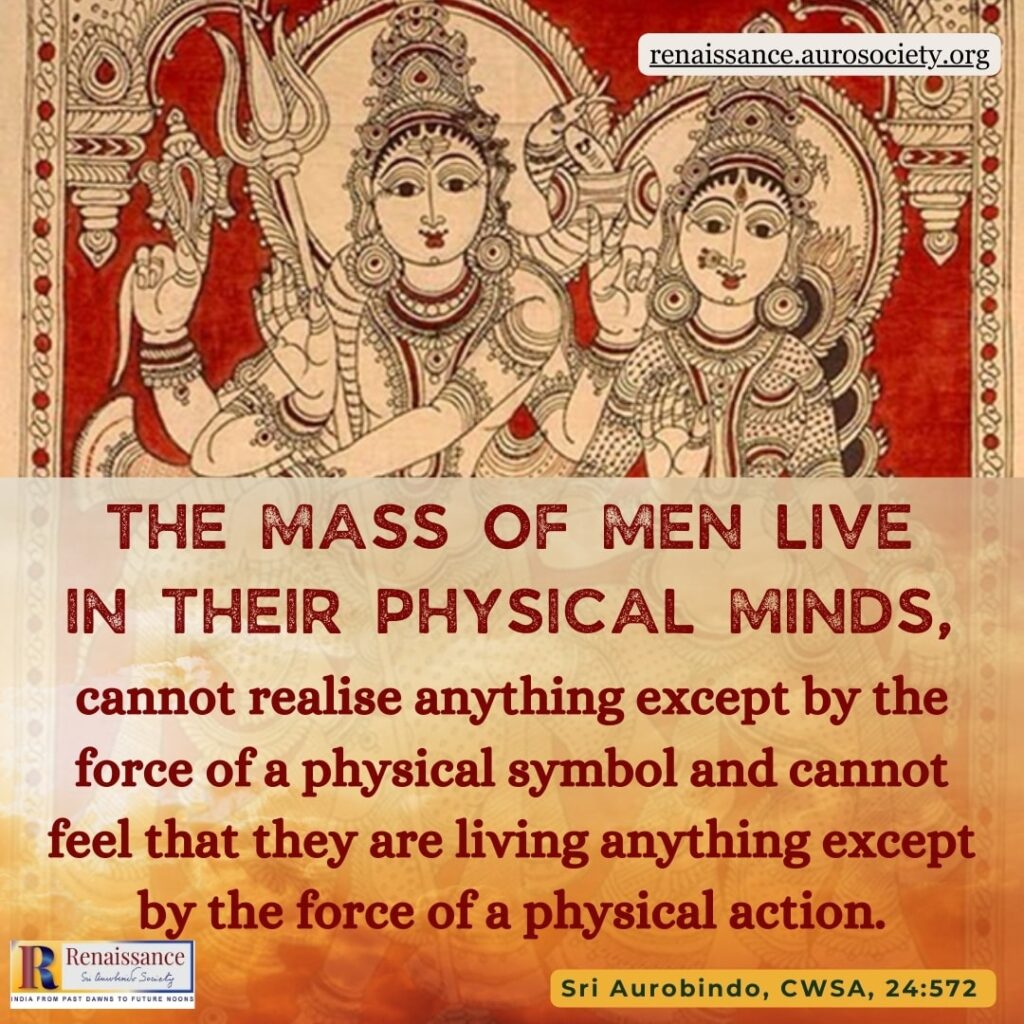
We cannot expect to teach astrophysics to a small student who is not ready for it yet. If astrophysics must be taught, it must be pared down, must be reduced to a form which would be comprehensible to the young child. He or she will not be able to absorb the whole of astrophysics anyway, but some basic concepts of space, gravity etc. could be taught depending on the student’s intellectual capacity.
Vigrahas work on the same principle.
An image is an attempt to catch the Infinite through the senses. It is merely an attempt. In any case the Infinite can never be reduced to the finite. The Hindus understand this very well. They know that the Brahman is beyond all concepts and images anyway. That is the reason why there are numerous gods and goddesses in Sanatana Dharma. If ultimately the Infinite cannot be expressed – there is no harm in having as many expressions, as many images as you want – depending on your taste and temperament.
For the Nameless, you can have as many names as you want; for the Formless, you can have as many forms as you want. This explains why in Hinduism there are so many different sects worshipping different Gods, but despite this rich diversity there is a peaceful co-existence. No bombastic claim about my god is the highest. There is a tremendous tolerance for difference in faiths, in opinions and in modes of worship.
This tolerance is extended to other faiths also.
Buddha who refused to believe in the authority of the Veda, has himself become one of the gods of Hinduism and is considered the ninth incarnation of Vishnu! This inclusiveness comes out of the understanding that the Infinite is One and if it has to be represented in finite terms – we can have as many as we want – because all are inadequate.
The highest spiritual ideal Sanatana Dharma places before us is to attain the Formless, the Nameless and the Infinite. That is the ultimate goal of human life. Before we can attain That by raising ourselves to that highest consciousness and uniting ourselves with That, we must also fulfil the demands of all those other parts in us – body, emotions, mind and various senses, – which in their own ways are also seeking the delight of intimacy with the Infinite.
Image worship helps us in satisfying the inner needs of these emotional and aesthetic parts in us. By giving a finite form to the Infinite, we can talk to it, worship it, complain to it and thank it, depending upon our varying moods.
When you love a person, you want to see and touch that person. You praise that person. You get angry with that person. Image worship has all these elements in it. Man is a creature of the mind and is dominated by matter. So he brings the Divine down to the level of his body and mind. Images are “veils mercifully granted to the common to spare his eyes the too dazzling nakedness of truth,” says Swami Vivekananda.
He adds,
The clear light of truth very few people in this life can bear, much less live up to. It is necessary therefore, that this comfortable religion should exist. Small minds whose circumference is very limited and which require little things to build them up, never venture to soar high in thought. Their conceptions are very good and helpful to them, even if only of little gods and symbols.
~ Swami Vivekananda
Buddha tried to keep all sorts of rituals and image worship out of his religion. His emphasis was always on the inner discipline, on the Eightfold Path. He repeatedly stressed that he was not a divine being; that he was an ordinary man who attained enlightenment by dint of his efforts. And that anyone could attain it if he tried, because Nirvana is our essential nature. No images, no worship, no rituals in his teaching. But the irony is, he himself became a mūrti. perhaps his icons are the highest selling spiritual icons across the world! He is now worshipped as God, and with elaborate rituals.
This shows that the human attempts to bring down the Infinite to the finite cannot be prevented.
And there is no harm in it. Because we are all on different stages of our spiritual evolution, we need symbols and supports during our growth. We should not be in too much of a hurry to destroy the images unless we have firmly established in our minds and our hearts the Reality which the images represent.
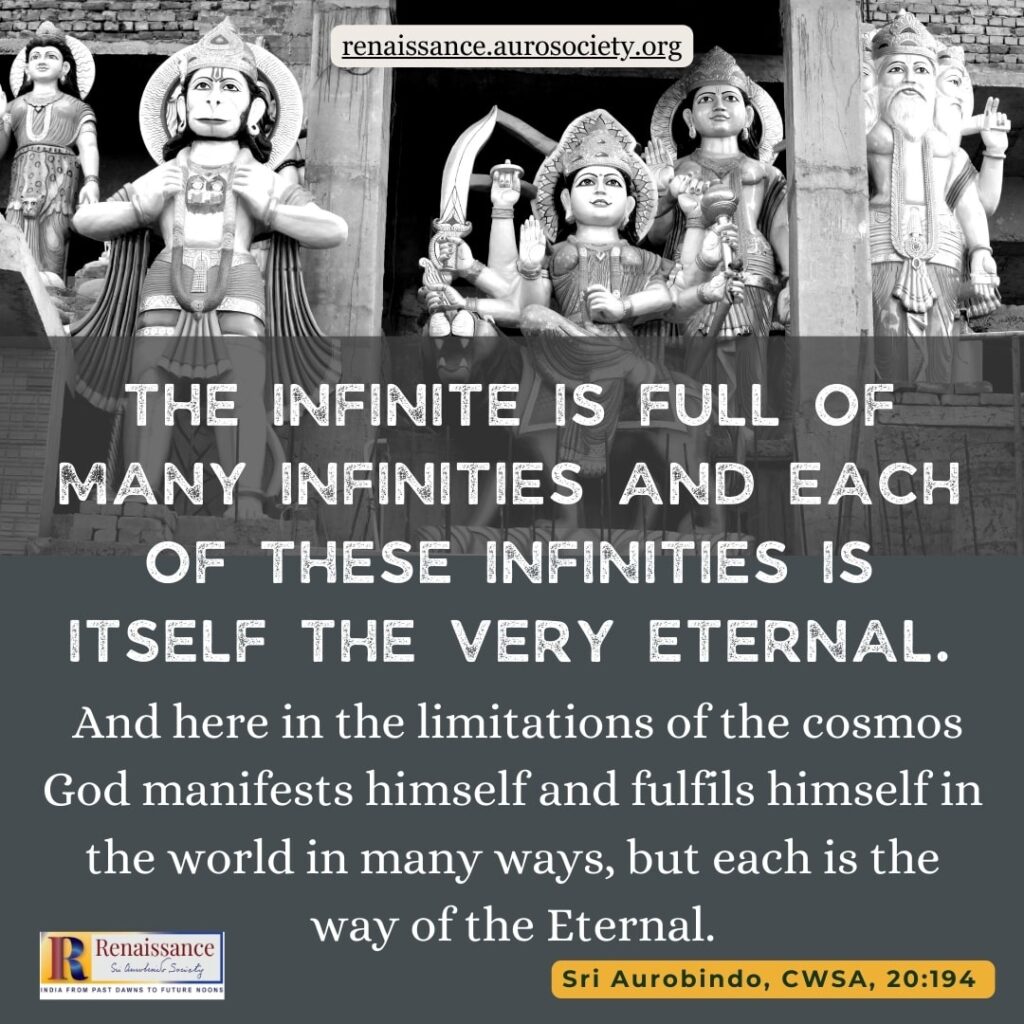
* * *
In The Synthesis of Yoga,Sri Aurobindo writes,
But while it is difficult for man to believe in something unseen within himself, it is easy for him to believe in something which he can image as extraneous to himself. The spiritual progress of most human beings demands an extraneous support, an object of faith outside us. It needs an external image of God; or it needs a human representative, — Incarnation, Prophet or Guru; or it demands both and receives them.
For according to the need of the human soul the Divine manifests himself as deity, as human divine or in simple humanity—using that thick disguise, which so successfully conceals the Godhead, for a means of transmission of his guidance.
The Hindu discipline of spirituality provides for this need of the soul by the conceptions of the Ishta Devata, the Avatar and the Guru.
~ CWSA, Vol. 23, p. 64
* * *
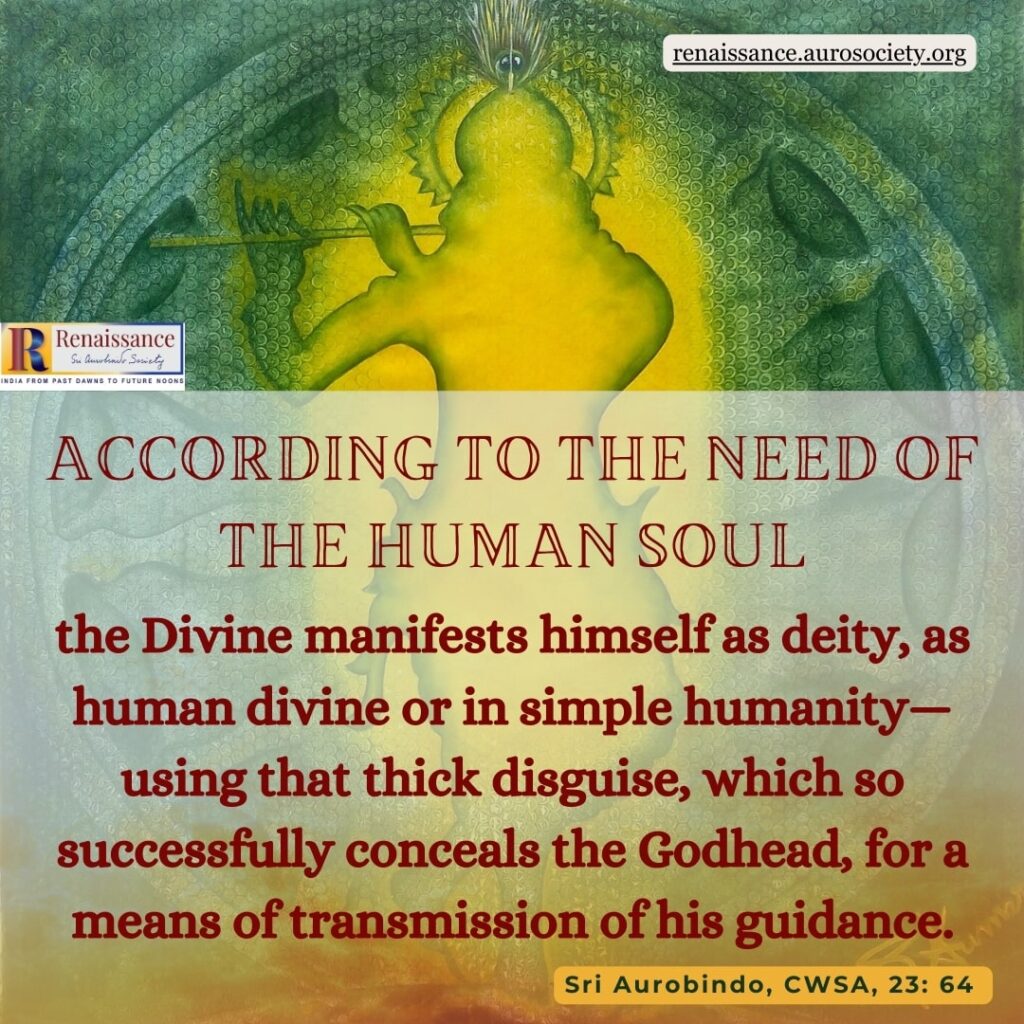
The human mind in its present state of spiritual infancy cannot raise itself to the rarefied heights of pure contemplation and meditation on the Infinite. Weighted down by the constant pulls of desires and anxieties, it is not sufficiently capable of taking a flight into the Nameless and Formless. For this, it needs aids for concentration to be able to sit in meditation. That is why the method of upāsana had been developed from the earliest Vedic times. The term upāsānā which means ‘sitting near’ can be translated as worship, contemplation, devotion, the making of offerings etc.
The Infinite, by its very definition is formless because form in itself is a limitation and the Infinite cannot be limited in any way. But when it is conceived as a finite entity, it assumes the form according to the capacity of the mind-intellect equipment that conceives it. Some attributes are chosen and concretized in the vigraha or mūrti. Each devotee chooses his own his Ishta Devata, even his own vigraha, based on the inner calling and turning of his temperament. The Infinite is like water, which though formless, assumes the shape of the vessel in which it is poured.
The Kulārṇava Tantra, an important Tantric text says:
Sadhakaanam hitarthaya Brahmano rupakalpana
For the benefit of the sādhakas, Brahman has been conceived in different forms. (Chapter VI, verse 72)
Ultimately it is the Nameless, Formless, Infinite and Eternal Brahman that is the foundation of all image worship. The sages and seers who devised this multiplicity of vigrahas for worship knew that
Akaashat patitam toyam yatha gacchati sagaram
Sarva deva namaskara Kesavam pratigacchati
As all rain falling from the sky reaches the ocean; so also, the prayers to all the Gods, ultimately go to Lord Kesava.
(Maha Subhashita Sangraha, 4289)
* * *
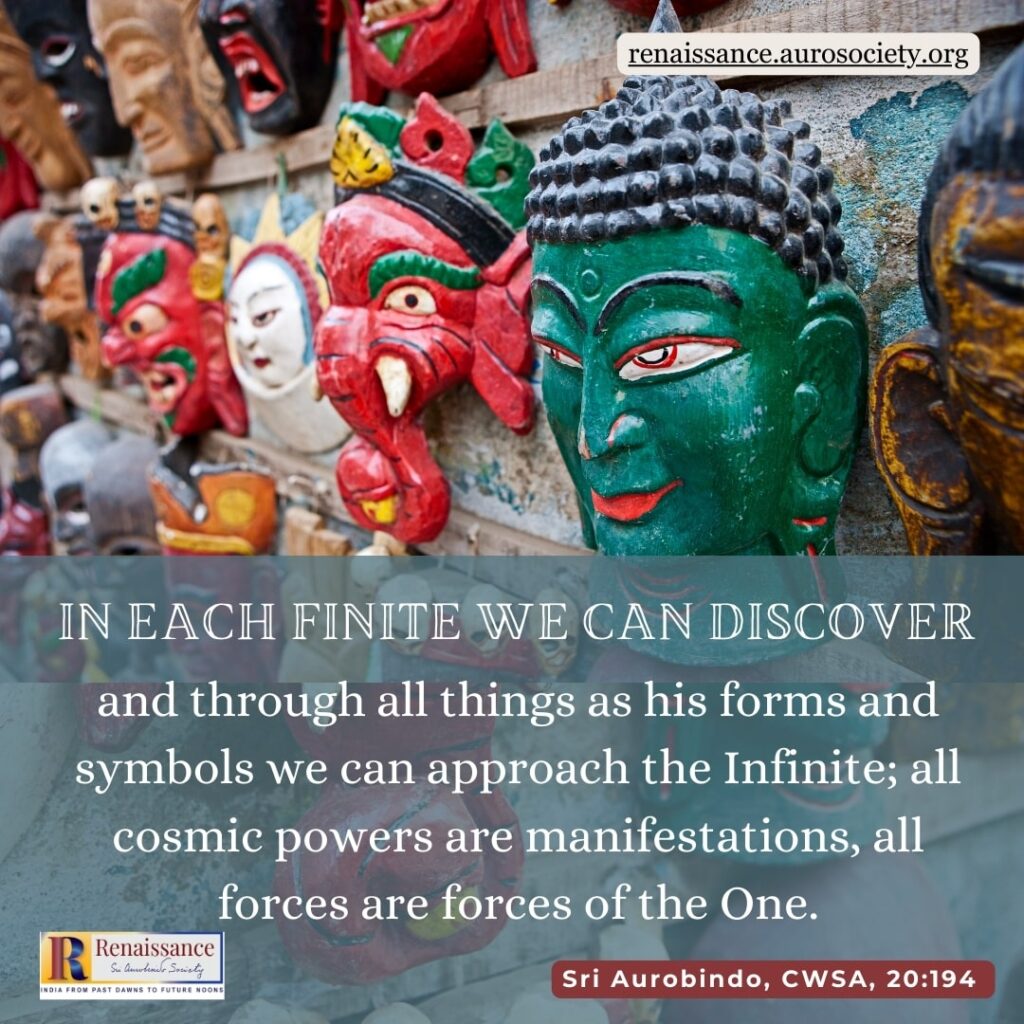
By whatever name we call, whether it is Rama, Krishna, Shiva, Devi or Ganesha – ultimately all our prayers reach the One Infinite Source, provided we are sincere in our worship.
But the images should not be taken lightly. When we delve into the symbolism of each image, it becomes clear to us that this is no child’s play. No other religion of the world has conceived a thing of this magnitude. Only the supreme vision of the Rishis who were drashtas (seers of the Supreme Truth) could conceive such vigrahas that conveyed the highest metaphysical concepts which every heart soaked in devotion could approach. Salutations to those drashtas who conceived these vigrahas!
Also read:
Reverential Pranāms to Vagdevi Saraswati
~ Design: Beloo Mehra

